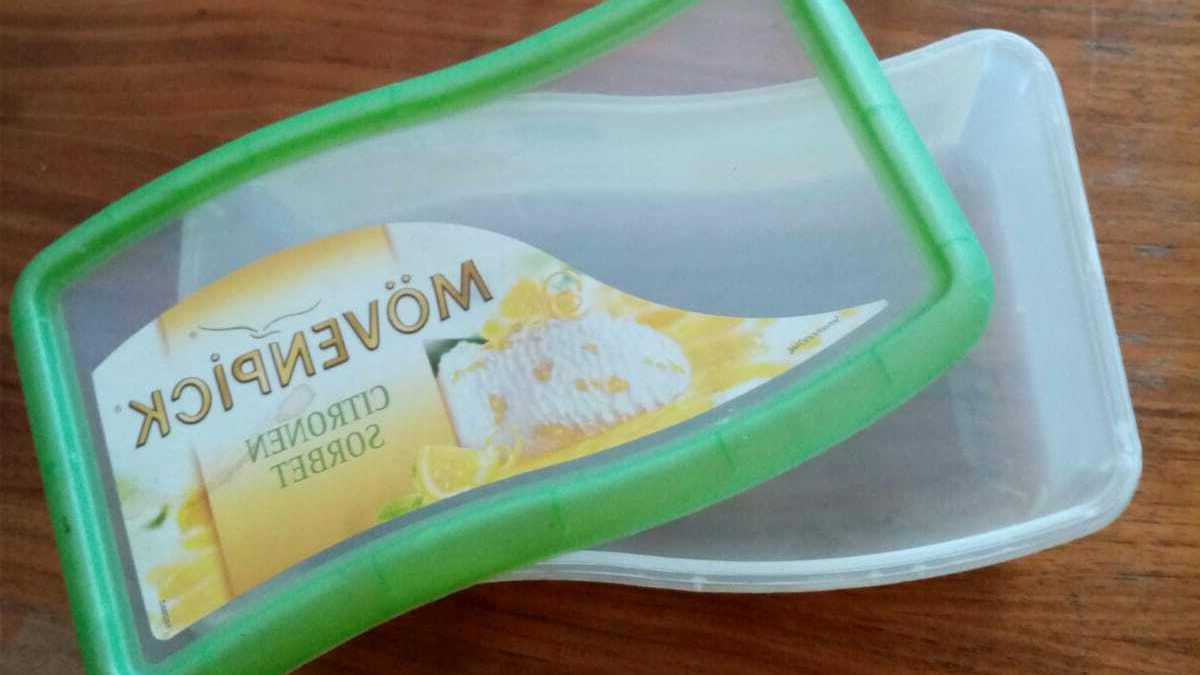Empty ice cream containers or yogurt containers are often used to store, freeze and defrost leftover food. Consumer associations, however, warn of health risks.
The party was great and there was even some of the delicious chili con carne left. “No problem,” we whisper in the kitchen, “I’ll just give it to you in a plastic box!” A good host – it seems – always has a few empty ice cream boxes, yogurt pots or other disposable packaging on hand, precisely for this kind of occasion. This avoids the eternal worry of knowing if the Tupperware will find its owner. But the consumer association warns: it is better not to store leftover food in empty single-use containers. Ice cream boxes, yogurt pots and the like are not suitable for reuse – neither for freezing, nor for reheating in the microwave, nor even for storage. But why ?
Please do not reuse an empty ice cream box
“Disposable packaging is designed for the specific food and for single use,” specifies the consumer center. This means that the packaging has certainly been tested for its specific use, so that the legal regulations on food safety are complied with in this regard – but for anything beyond that, there is in principle a health risk. .
In the meantime, people have become totally accustomed to their food being wrapped in plastic and stored in plastic containers. But the combination of food and plastic is not without risk. This is because not all plastics are created equal and foods also have different properties which react differently to the packaging material used. The consumer association uses the example of the box of ice cream to illustrate this point:
“If the box is intended for the sale of fat-free sorbets, it is possible that the legal limit values for the transfer of chemicals are not respected in the case of fatty or hot foods. Therefore, under no circumstances should you put in the box of sorbets the fatty and hot soup to cool and freeze and do not put it in the microwave to defrost it”.
Reuse an empty ice cream container?
Underestimated nuisances
By reusing the ice cream box, substances harmful to health can separate from the plastic and pass into the body via food. Since some chemicals in plastic may be fat-soluble, it is not recommended to put oily and fatty foods in packaging intended for, say, water-based sorbet. Heating and freezing represent additional stress on the material, which attacks the plastic. Finally, disposable packaging – unlike storage boxes. – are not designed to withstand repeated washing or even being put in the dishwasher without damage.
This is why the consumer association announces: “Even when freezing foods such as cakes or fruit, we recommend, as a precautionary measure, to avoid reusing them, even if the likelihood of transfer of chemicals is significantly lower than for a hot, fatty soup. Prevention is better than cure.
Long-term damage is not excluded
Some will object that many have been doing this forever – according to the motto: “No one has died from it yet”. But the problem is that it is difficult to assess the health consequences of microplastics and chemicals that enter the body through disposable packaging. It certainly depends on the quantity, genetic predisposition as well as other concomitant factors. But doctors do not rule out long-term damage such as an increased risk of cancer and metabolic diseases.
Legal regulations regarding food safety do not exist without reason. Anyone who expects manufacturers to comply with them should also comply with them in their private life – for the sake of their own health.



